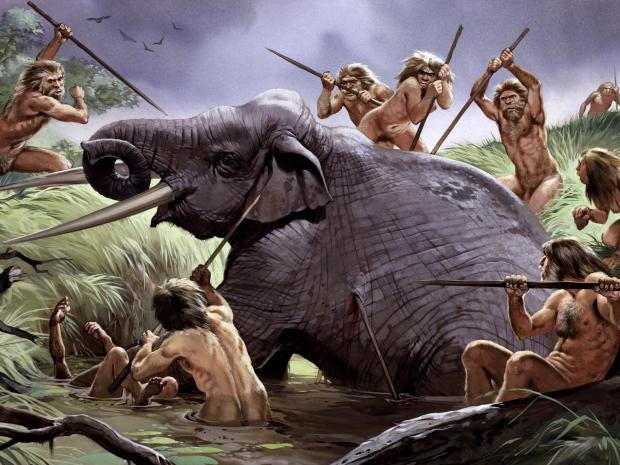

erectus is nearly modern in its postcranial anatomy, with few exceptions. erectus is more easily distinguished from earlier hominins and Paranthropus-not just in craniodental anatomy but in body proportions and postcranial morphology as well. Early Homo is distinguishable from contemporaneous robust australopiths by their smaller teeth and jaws and by larger cranial capacity.īecause it is more derived, H. The exceptionally large-toothed and strong-jawed robust australopiths ( Paranthropus, which also descended from an earlier Australopithecus species), with their distinct dietary niche, one of tough nuts, seeds and fruits and fibrous vegetation, continued to thrive in some of the same localities as these species of early Homo, but they remained evolutionarily separate.

Between about 1.9 and 1.8 million years ago, there is evidence for geographic and temporal overlap of all three early Homo species in East Africa. habilis around 1.8 million years ago, marks the first hominin to disperse outside of Africa. 1)-are restricted to East and South Africa. rudolfensis-the poorly understood, but slightly larger species dated to about 1.9 million years ago (Fig. habilis, it widely accepted that it is the common ancestor of all later species in the genus Homo including our own, Homo sapiens. However, based on what is already known about H. Future fossil discoveries will probably answer this question. habilis evolved in South Africa, then Australopithecus africanus and Australopithecus sediba are candidates. habilis evolved in East Africa, then Australopithecus afarensis and Australopithecus garhi are its possible ancestors, but if H. habilis, spanning from 2.3 to 1.4 million years ago, is descended from a species of Australopithecus. erectus signifies a major shift in hominin evolution, most notably through increased brain and body size and increasingly complex tools and behaviors. Although it was anatomically and behaviorally primitive compared to modern humans, H. erectus, little is known about how they differ in anatomy and behavior from one another and from preceding australopiths. The first two species are the most primitive. Listed roughly in order of their earliest appearance from oldest to youngest, these three species are the focus of this review. Of the earliest members of the genus Homo, the best-known species are Homo habilis, Homo rudolfensis, and Homo erectus (Table 1). In this increasingly cooler world, something new, both anatomically and behaviorally, emerged. As the Pliocene epoch came to a close and global climate was shifting at about 2.5 million years ago (deMenocal 2004), there is a concomitant change in the hominin fossil record. The early members of the genus Homo are the first to tip the scale from the more apish side of our evolutionary history toward the more human one.įor the first, four million years or so of hominin evolution, the hominin fossil record is characterized by, among other trends, canine reduction and postcranial metamorphosis in the following genera: Sahelanthropus, Orrorin, Ardipithecus, Australopithecus, and Paranthropus. erectus was the first obligate, fully committed biped, and with a body adapted for modern striding locomotion, it was also the first in the human lineage to disperse outside of Africa. erectus is enhanced due to its rich fossil record. Our understanding of the paleobiology and evolution of the larger-brained H. habilis and that it overlapped in time and space with other early Homo. rudolfensis except that it had a relatively large brain and large teeth compared to H. habilis is known for retaining primitive features that link it to australopiths and for being the first stone tool makers. This early part of the human genus is represented by three species: Homo habilis, Homo rudolfensis, and Homo erectus. The origin of the genus Homo in Africa signals the beginning of the shift from increasingly bipedal apes to primitive, large-brained, stone tool-making, meat-eaters that traveled far and wide.


 0 kommentar(er)
0 kommentar(er)
